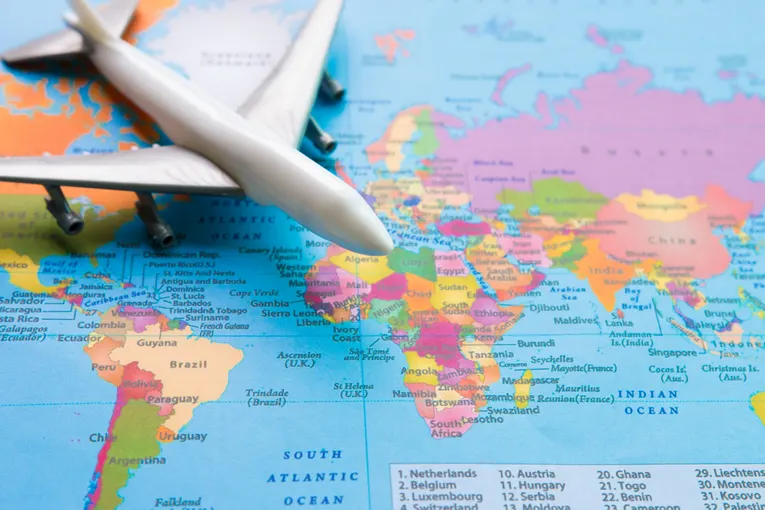Travel in 2025 demands more alertness than ever. With sudden policy shifts, flight cancellations, and evolving health guidelines, knowing the Live Travel Updates is no longer optional—it’s essential. You have a complete guide to Live Travel Updates: tracking current restrictions, understanding flight changes, and applying safety tips.
1. Understanding Live Travel Updates & Why They Matter

Live Travel Updates refer to real‑time information about travel restrictions, flight statuses, safety advisories, and more. Because conditions can change fast—overnight or even during your journey—these updates help you:
- Avoid being stranded
- Adjust plans wisely
- Stay safe and compliant
- Reduce travel stress
Travelers who rely only on static data risk missing crucial developments. In contrast, using Live Travel Updates helps you adapt immediately—whether it’s a sudden border closure, a flight delay, or a health alert.
2. Current Travel Restrictions: What You Need to Know Now
Restrictions today stem from three major areas:
- Health & Disease Control
- Geopolitical & Security Issues
- Weather, Natural Disasters & Airspace Closures
Below, we break down each area, with examples and live‑style insight.
2.1 Health & Disease‑Driven Restrictions
Even now, some countries impose rules like:
- Mandatory tests or proof of vaccination
- Quarantine on arrival or exit
- Health declarations
- Restricted entry from high-risk”nations
For instance, several nations still demand a negative COVID or PCR test within 48–72 hours before flying. Others may require rapid antigen tests on arrival. If you skip these steps, you may face fines, quarantine, or even denial of boarding.
2.2 Geopolitical & Security Restrictions
Political tensions, war zones, and diplomatic breakdowns can force abrupt closures. Some common disruptions include:
- Airspace bans: Countries may block certain air corridors.
- Border lockdowns: Land or sea borders may shut without warning.
- Transit restrictions: Layovers in some nations may be forbidden depending on your origin or nationality.
In recent months, airlines have rerouted flights to avoid restricted skies, which increases duration and cost.
2.3 Weather & Environmental Disruptions
Severe storms, volcanic eruptions, and wildfires can lead to:
- Airport closures
- Runway flooding or damage
- Visibility constraints
- Fuel or routing limitations
In such cases, airlines often cancel or delay flights. Travelers must watch Live Travel Updates to avoid wasted time or risk.
3. Live Flight Status: Cancellations, Delays & Resumptions
One of the most vital aspects of Live Travel Updates is real‑time flight status—knowing whether your flight runs on time, is delayed, cancelled, or rerouted.
3.1 Why Flights Get Disrupted
Disruptions happen due to:
- Unpredictable weather
- Air traffic control issues
- Crew or aircraft availability
- Technical or maintenance breakdowns
- Airspace or security mandates
Because these issues may arise close to departure, staying updated is critical.
3.2 Cancellations & Resumption Patterns
When disruptions ease, flights often resume in phases—not full service at once. Airlines may:
- Start with one or two daily flights
- Use alternate routes
- Resume incremental service for safer corridors
Be ready for partial operations before full recovery.
3.3 Real‑Time Flight Data & How to Use It
To track your flights:
- Use airline apps or “Flight Status” features
- Enable push or SMS alerts
- Use flight tracker tools
- Monitor NOTAMs and airport advisories
- Watch weather and airspace reports
If you see a cancellation or delay, act immediately: rebook, replan your transit, or secure accommodations early.
4. Safety Tips While You Travel
Knowing Live Travel Updates is a big part of safety. Here’s how to stay safer when conditions shift.
4.1 Before You Leave Home
- Get travel insurance that covers delays, cancellations, and emergencies.
- Keep both hard and digital copies of vaccination cards, test records, passport, and visa.
- Register your trip with your government or embassy so they can reach you if conditions change.
- Build a backup plan and alternative routes.
4.2 At the Airport & During Boarding
- Arrive early—check in early since disruptions may slow things down.
- Use mobile boarding passes to reduce contact and speed processing.
- Keep an eye on gate changes or status alerts in real time.
- In case of cancellation, calmly approach airline desks or agents to rebook.
4.3 En Route & Layovers
- Don’t trust earlier updates—monitor continuously.
- If rerouted or delayed mid‑air, notify connecting segments.
- Keep essentials (meds, chargers, clothes) in your carry‑on.
- Know local emergency contacts and embassy numbers.
4.4 At Destination
- Stay aware of local news and safety alerts.
- Avoid large gatherings or zones prone to unrest.
- Know where medical care is located.
- Stay alert—conditions can shift quickly.
5. How to Structure Your Live Travel Update Workflow
To use Global Travel Alerts effectively, set up a systematic process:

- Multiple Sources
Use airline alerts, government advisories, news feeds, and flight trackers. - Daily Review Plan
Check restrictions, flight status, and local advisories each morning and evening. - Alert Subscriptions
Sign up for SMS/push alerts from airlines and government services. - Backup Scheduling
Maintain optional routes and extra time between connections. - Real-Time Check before Departure
Reconfirm your flight and restrictions within an hour of leaving home. - On-the-Go Scanning
During travel, scan for mid‑journey updates or status changes.
6. Frequently Asked Questions (Related to Live Travel Updates)
Q1: What is the best way to track a flight live?
The best method is via the airline’s app or a flight tracker tool with SMS or push alerts enabled. Always cross-check if something seems off.
Q2: If my flight is canceled, what should I do first?
Immediately contact the airline or agent to arrange rebooking or a refund. Also, adjust your onward plan and local transport.
Q3: How often should I check travel restrictions?
Daily until departure, then twice more on the day of travel: morning and just before leaving.
Q4: Are border closures announced in advance?
Sometimes yes, but often no. That’s why Live Travel Updates must be your guide—not old data.
Q5: Can weather cause reroutes rather than cancellations?
Yes. Planes often fly alternative paths when airspace or bad weather blocks the typical route.
7. Live Travel Updates — Example Scenarios
Here are two short hypothetical cases to show how Live Travel Updates could affect you:
Scenario A: Sudden Border Closure
You’re flying from Country A to Country B via Country C. Hours before your flight, Country C announces a transit ban. Because you watched Live Travel Updates, yourebookedk a direct flight via Country D—no last‑minute scramble at the airport.
Scenario B: Mid‑flight Airspace Shutdown
Midway during your journey, air traffic control in a zone closes. The flight diverts to a safe alternate route with a longer journey time. Thanks to real‑time updates, your connecting airline has already rescheduled your onward flight.
These scenarios happen more often than we think—making Live Travel Updates your best co‑pilot.
8. Tips to Write Live Travel Updates for Your Readers
If you run a travel site or blog, here’s how to structure updates:
Refresh content frequently—or use auto‑feeds to keep it live.
Use Live Travel Updates as your content’s focus phrase.
Start with the latest restriction changes or flight news.
Segment by region or airline.
Present status in bullet points or tables for clarity.
Use timestamps to show when each update occurred.
Add safety tips tied directly to new developments.
Conclusion
In today’s fast-changing travel world, Live Travel Updates are more than just helpful—they’re critical. From sudden restrictions and flight cancellations to unexpected safety alerts, travelers need reliable, real-time information to stay prepared. Without it, plans can fall apart fast.
Staying updated means avoiding delays, navigating disruptions, and most importantly, traveling safely and smartly. Whether you’re a frequent flyer or an occasional explorer, building a habit of checking Live Travel Updates can protect your time, money, and peace of mind.
So before your next trip, make sure you’re not just packed—but prepared. Monitor updates, act early, and stay flexible. With the right knowledge at your fingertips, every journey can be smoother, safer, and more successful.











